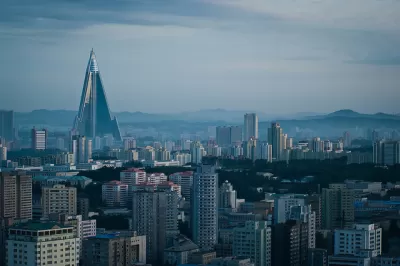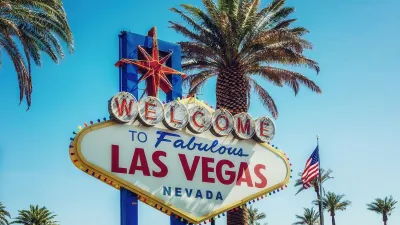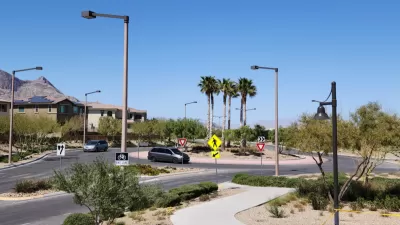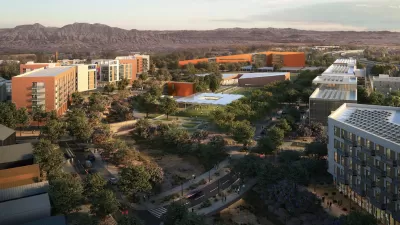Essayist and novelist Pico Iyer visits Las Vegas and Pyongyang in rapid succession to find that the capital of freedom and fun is not so dissimilar from the wan capital of the Hermit Kingdom.

It's hard to tell whether Las Vegas' many architectural curiosities are quintessentially Vegas or, per their designs, quintessentially someplace else, what with replicas of New York, Venice, and ancient Egypt dotting the desert floor. It turns out that they might also be quintessentially North Korean. Writer Pico Iyer discovers that the same sense of detachment and celebration of the ersatz that prevails in Las Vegas is eerily present in Pyongyang as well.
His description could fit either city:
"Not far from my room was an Arc de Triomphe (thirty feet higher than the one in Paris). Minutes away was the tallest tourist hotel in the world, a 105-story construction in the shape of a rocket. Theaters in the shape of water-mills, Ferris-wheels, and Legoland skyscrapers, gleaming Olympic stadia lined the wide avenues."
"People were walking along the immaculate lawns, though they might have been figures in an architect’s model, so staged and formal did their movements often seem. Where the North Korean capital seemed as vacant and two-dimensional as a textbook photograph, Las Vegas was overflowing with an excess of animal high spirits; but both really felt like hallucinations, designed to dazzle (or defeat) the innocent."
"Both cities are products of a mid-twentieth-century spirit that saw what power and profit could be found in constructing mass fantasies ab nihilo—in the deserts of the West, out of the rubble of the Korean War. And both serve even now as billboards of a kind, “theoretical and practical weapons of the system,” as Kim Jong Il had it in a 180-page treatise on architecture, with buildings designed less to be lived in than to be marveled at by friends and enemies alike. Pyongyang is at once a playground for the local elite and a perpetual reminder to the 90 percent of North Koreans who are not permitted to visit of what awaits them if their talent or patriotism—or beauty—are strong enough. But both cities are haunted by a kind of lottery consciousness, which declares that power and glamour can be yours only if divine whim (or a throw of a dice) so decrees."
FULL STORY: Empty Cities

Planetizen Federal Action Tracker
A weekly monitor of how Trump’s orders and actions are impacting planners and planning in America.

Congressman Proposes Bill to Rename DC Metro “Trump Train”
The Make Autorail Great Again Act would withhold federal funding to the system until the Washington Metropolitan Area Transit Authority (WMATA), rebrands as the Washington Metropolitan Authority for Greater Access (WMAGA).

DARTSpace Platform Streamlines Dallas TOD Application Process
The Dallas transit agency hopes a shorter permitting timeline will boost transit-oriented development around rail stations.

Renters Now Outnumber Homeowners in Over 200 US Suburbs
High housing costs in city centers and the new-found flexibility offered by remote work are pushing more renters to suburban areas.

The Tiny, Adorable $7,000 Car Turning Japan Onto EVs
The single seat Mibot charges from a regular plug as quickly as an iPad, and is about half the price of an average EV.

Supreme Court Ruling in Pipeline Case Guts Federal Environmental Law
The decision limits the scope of a federal law that mandates extensive environmental impact reviews of energy, infrastructure, and transportation projects.
Urban Design for Planners 1: Software Tools
This six-course series explores essential urban design concepts using open source software and equips planners with the tools they need to participate fully in the urban design process.
Planning for Universal Design
Learn the tools for implementing Universal Design in planning regulations.
Municipality of Princeton
Roanoke Valley-Alleghany Regional Commission
City of Mt Shasta
City of Camden Redevelopment Agency
City of Astoria
Transportation Research & Education Center (TREC) at Portland State University
US High Speed Rail Association
City of Camden Redevelopment Agency
Municipality of Princeton (NJ)





























